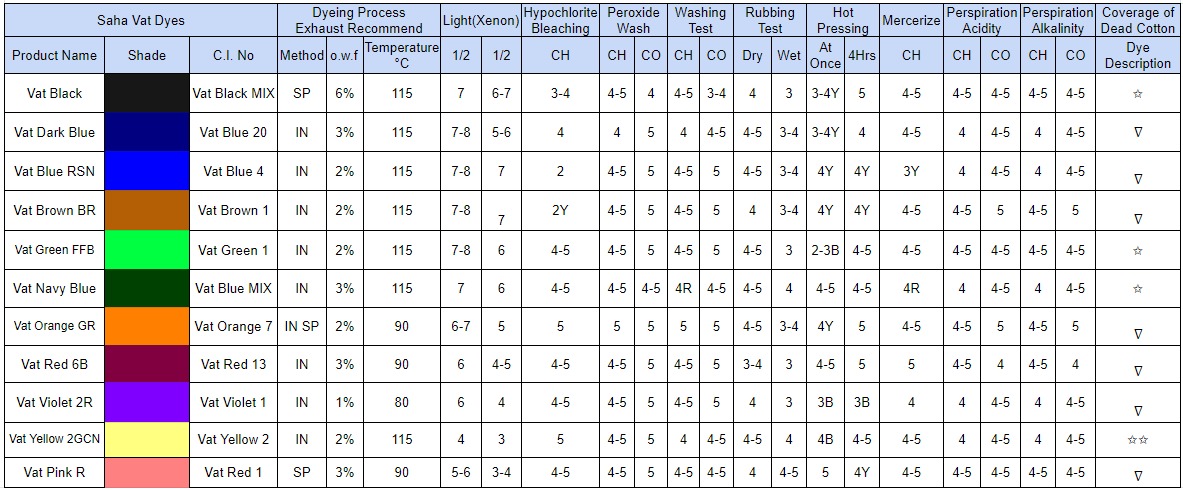Dyeing Process of Vat Dyes:
Vat dyes requires a reducing agent to solubilize to water. Most common reducing agent for vat dyes is sodium dithionite which convert the dye to leuco form to solubilize in water. When its attached to the fabric then leuco dye oxydized to the insoluble state which is intensely colored. Control are often necessary for chemical reaction such as oxidation, reaction, pH. For vat dyeing water need to put in dye bath with temperature of 50º- 60 ºC. Temperature may vary for different dyestuff. Then it may need to add required amount of caustic soda, sodium hydro sulphate with keeping in required temperature. The dyeing process will be in oxygen free mode. Indigo is an example of vat dye class which change color from yellow to green and then blue when hit the air.
